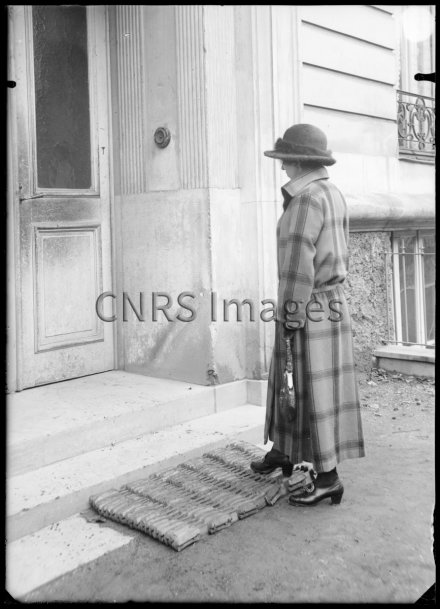Production year
1924

© Fonds historique / CNRS Images
19000001_0505
Rubber door mat, photographed on March 5th, 1924. Studies were thus carried out on flame-resistant materials, including a rubber floor mat developed at the Office’s engineering lab. Early in the 1920s, rubber floor mats had been revealed as particularly combustible, thus emitting toxic fumes. The Office’s chemistry committee, which had already developed a machine to test rubber in 1924, now proposed an alternative by inserting flame-resistant products in the material, making it less susceptible to flames. To lead by example, Breton installed a mat of this type outside his door and presented it at the first Salon de la France d’outre-mer (an exhi¬bition devoted to France’s overseas possessions), held at the Grand Palais at the end of 1935. The photograph of the rubber floor mat presents a human figure and a mat at the doorstep of a house and seems to be implying that even if the house burns down, the mat will resist the flames. Office national des recherches scientifiques et industrielles et des inventions.
The use of media visible on the CNRS Images Platform can be granted on request. Any reproduction or representation is forbidden without prior authorization from CNRS Images (except for resources under Creative Commons license).
No modification of an image may be made without the prior consent of CNRS Images.
No use of an image for advertising purposes or distribution to a third party may be made without the prior agreement of CNRS Images.
For more information, please consult our general conditions
1924
Our work is guided by the way scientists question the world around them and we translate their research into images to help people to understand the world better and to awaken their curiosity and wonderment.